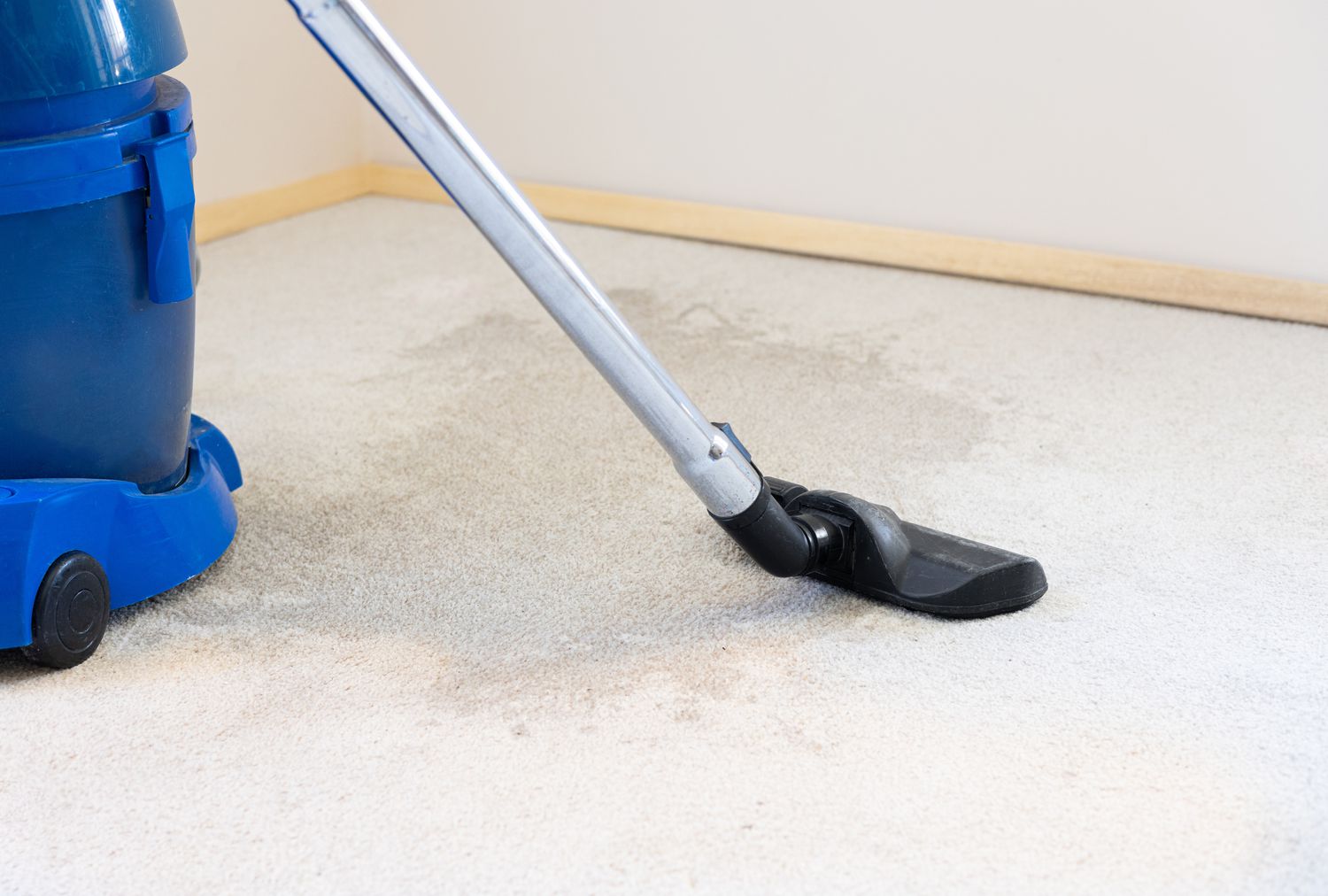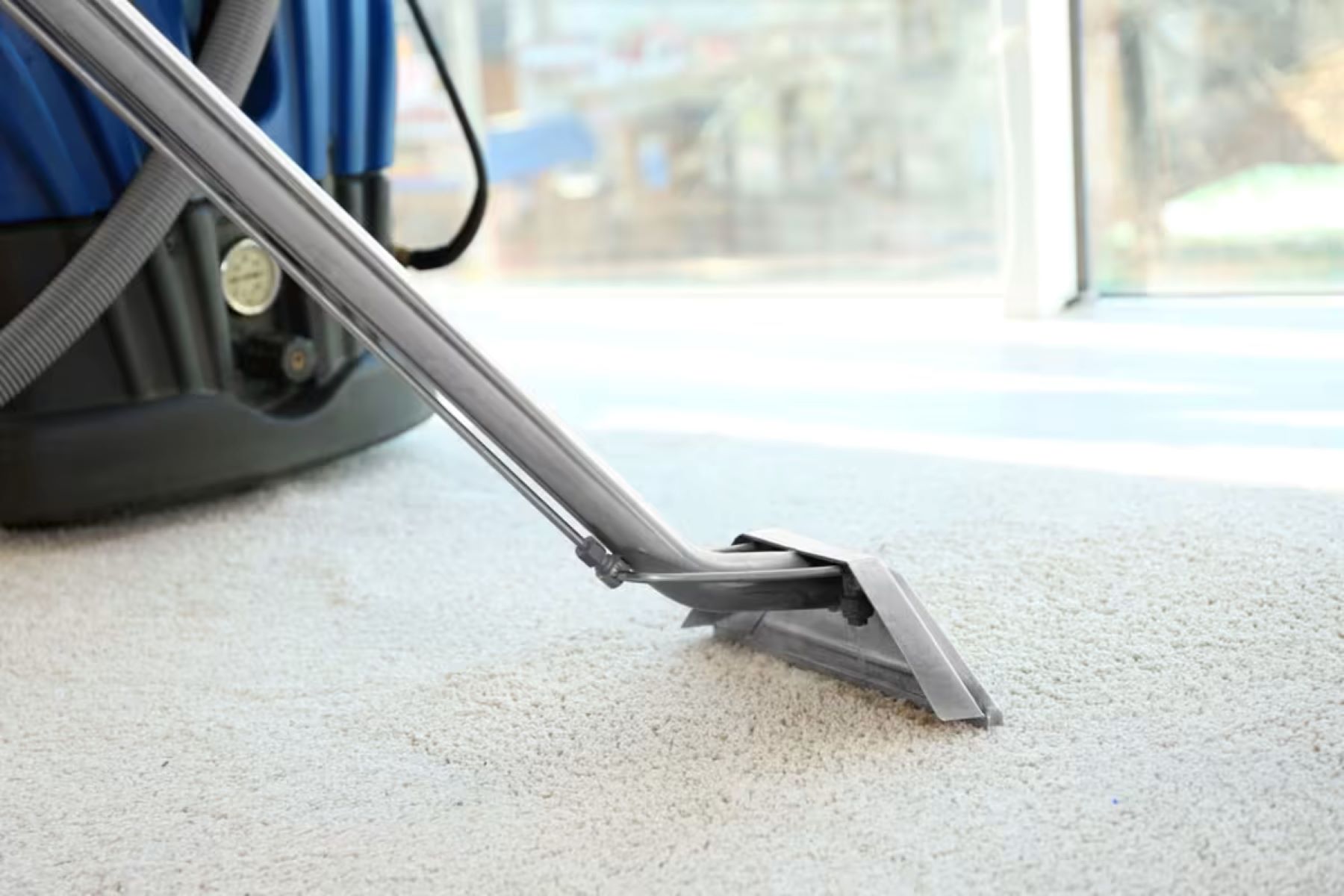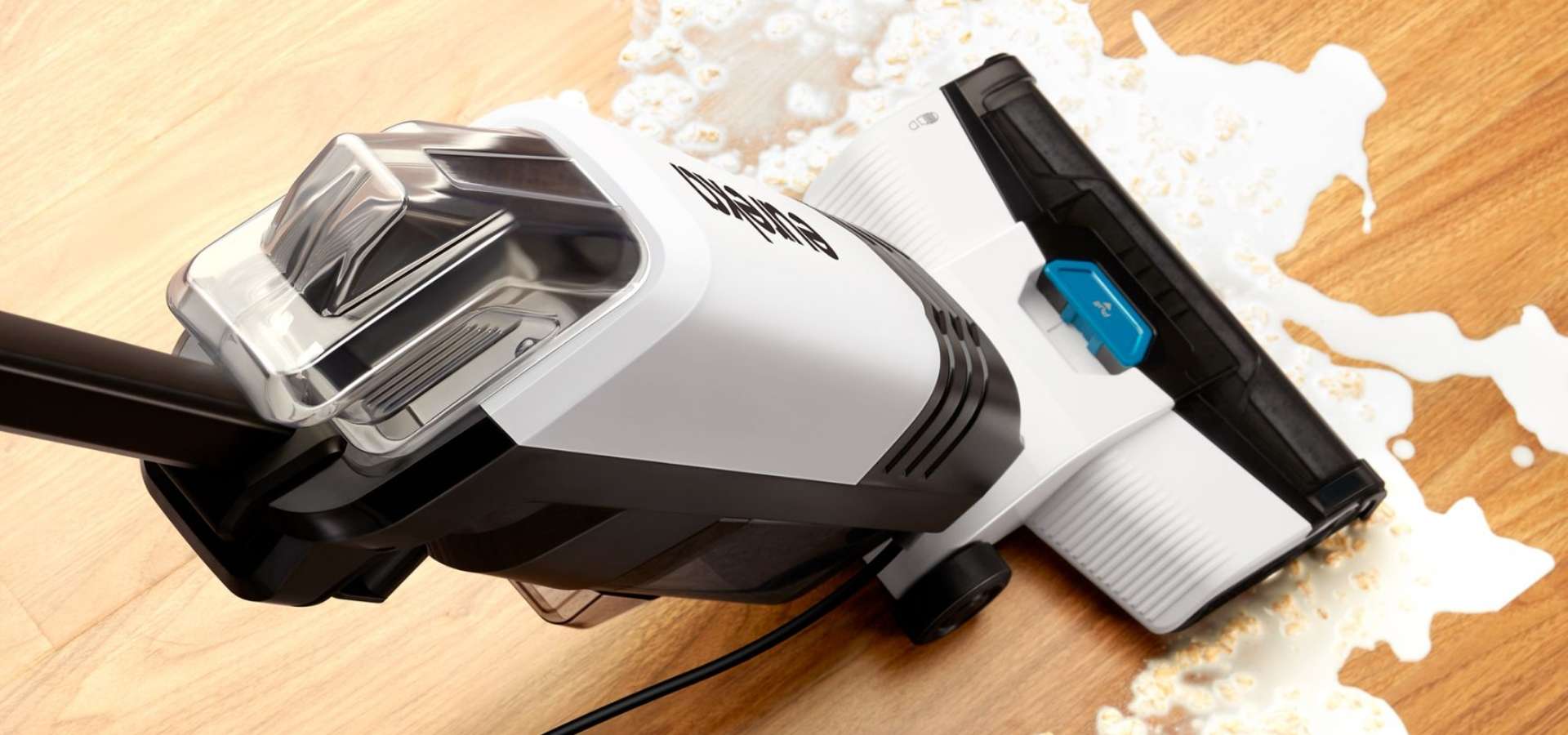

Articles
How To Dry Wet Carpet
Modified: October 20, 2024
Learn effective techniques for drying wet carpets in this comprehensive guide. Read articles and tips on how to quickly dry and restore your carpet to its original condition.
(Many of the links in this article redirect to a specific reviewed product. Your purchase of these products through affiliate links helps to generate commission for Storables.com, at no extra cost. Learn more)
Introduction
Dealing with a wet carpet can be a frustrating and stressful experience. Whether it’s from a burst pipe, a leaky roof, or a spill that went unnoticed, it’s important to act quickly to prevent further damage and the potential growth of mold and mildew. In this article, we will guide you through the steps you need to take to effectively dry a wet carpet and restore it to its original condition.
Before we dive into the details, it’s essential to understand that time is of the essence when it comes to drying a wet carpet. The longer the water sits, the more damage it can cause. Not only can it weaken the carpet’s structure, but it can also create an environment for mold and mildew to grow, leading to potential health hazards.
Now, let’s get started with step one: removing excess water.
Key Takeaways:
- Act quickly to remove excess water and use fans and dehumidifiers to prevent mold growth. Steam clean and monitor humidity to restore and maintain your carpet’s health.
- Follow the 7-step process to effectively dry and restore your wet carpet, ensuring its long-term health and beauty. Time is crucial in minimizing damage.
Read more: How To Dry A Wet Car Carpet
Step 1: Remove Excess Water
The first and most crucial step in drying a wet carpet is to remove as much excess water as possible. This will help prevent further saturation, minimize damage, and speed up the drying process.
There are several methods you can use to remove excess water from your carpet:
- Use towels or rags: Grab a stack of absorbent towels or rags and gently pat the wet areas of the carpet. Avoid rubbing, as this can spread the water and potentially damage the carpet fibers.
- Use a wet/dry vacuum: If you have access to a wet/dry vacuum, use it to suction out the water from the carpet. Start from the edges and work your way towards the center, making sure to cover the entire affected area.
- Utilize a squeegee: If the water is pooled in one area, you can use a squeegee to push the water towards a drain or receptacle. Make sure to apply gentle pressure and move in one direction to avoid pushing the water into other areas of the carpet.
- Try a carpet extractor: If you have a carpet extractor machine, you can use it to spray clean water onto the carpet and simultaneously extract the dirty water. This method is especially effective for larger carpeted areas that have been heavily saturated.
Remember, the goal at this stage is to remove as much water as possible. However, keep in mind that these methods may not completely dry the carpet. That’s where the next step comes in – extracting water with a wet/dry vacuum.
Step 2: Extract Water with a Wet/Dry Vacuum
Once you have removed the excess water from the carpet, it’s time to extract the remaining moisture using a wet/dry vacuum. This powerful tool is designed to suck up water effectively, helping to expedite the drying process.
Here’s how you can use a wet/dry vacuum to extract water from your carpet:
- Make sure the vacuum is set to the appropriate setting for wet vacuuming. Most wet/dry vacuums have a switch or dial to adjust between wet and dry modes.
- Attach the appropriate nozzle or attachment for wet vacuuming. A wide, flat nozzle or a squeegee attachment is typically used for this purpose.
- Start at one end of the wet carpet and slowly move the vacuum over the affected area. Be thorough and make multiple passes to ensure you extract as much water as possible.
- Pay extra attention to areas where the water might have soaked through, such as carpet padding or the subfloor. Use the vacuum to suction out any trapped moisture in these areas.
- Empty the vacuum tank regularly to prevent it from becoming too full and losing suction power.
Continue the extraction process until you notice that the carpet feels damp but not wet to the touch. This indicates that you have successfully removed the majority of the moisture from the carpet. However, it’s important to note that the carpet may still require further drying techniques to completely restore it to its pre-wet state.
Next, we will move on to step three: lifting carpets and removing furniture to allow for proper airflow and drying.
Step 3: Lift Carpets and Remove Furniture
After extracting as much water as possible from the carpet, it’s time to take the necessary steps to enhance airflow and promote efficient drying. This involves lifting the carpets and removing any furniture or objects that may obstruct the drying process.
Follow these steps to properly lift the carpets and clear the area:
- Start by carefully lifting the corners of the carpet. You may need a helper to assist you, especially if the carpet is large and heavy.
- Once the corners are lifted, slide pieces of cardboard or foam blocks underneath to keep the carpet elevated. This allows air to circulate underneath and aids in the drying process.
- If you have access to fans or air movers, position them strategically around the damp area. Point the fans towards the carpet to improve air circulation and facilitate drying.
- Remove any furniture or objects that are on or near the wet carpet. This will prevent them from absorbing moisture and potentially causing additional damage.
- If there are heavy furniture pieces that cannot be easily moved, place aluminum foil or plastic sheets under the legs to prevent the furniture from transferring moisture back onto the carpet.
Lifting the carpets and creating a clear space allows the air to reach both the top and bottom surfaces of the carpet, accelerating the drying process. The increased airflow helps to evaporate the remaining moisture, preventing mold and mildew growth.
Now that the carpets are lifted and the area is clear, it’s time to move on to step four: using fans and dehumidifiers to further expedite the drying process.
Step 4: Use Fans and Dehumidifiers
Now that you have lifted the carpets and created a clear space, it’s time to harness the power of fans and dehumidifiers to aid in the drying process. These tools will help to circulate air and remove excess moisture from the environment, speeding up the drying time of your wet carpet.
Follow these guidelines to effectively use fans and dehumidifiers:
- Position fans around the damp area, aiming them towards the carpet. The airflow generated by the fans will help to evaporate the moisture and expedite the drying process.
- Use box fans, pedestal fans, or even ceiling fans to create a cross-ventilation effect. Place some fans near windows or doors to draw in fresh air and remove damp air from the room.
- If available, use a dehumidifier in the room to remove excess moisture from the air. Set it to a moderate humidity level, typically around 45-50%. This will prevent the air from becoming too dry or too humid, which can cause further issues.
- Regularly check the water collection container in the dehumidifier and empty it as needed. This will ensure that the unit continues to function optimally.
- Allow the fans and dehumidifiers to run continuously until the carpet is completely dry. This may take a few days or longer, depending on the extent of the water damage.
Remember to monitor the progress of the drying process regularly. Feel the carpet with your hand to gauge its dryness. Additionally, keep an eye out for any signs of mold or mildew, such as musty odors or discoloration. If you notice any of these signs, it’s crucial to address them promptly to prevent further damage.
With the fans and dehumidifiers in place, the drying process will be accelerated, bringing us closer to fully restoring your wet carpet. However, there are a few more steps to complete before we can consider the job done.
Use a wet/dry vacuum to remove as much water as possible from the carpet. Open windows and use fans to increase air circulation and speed up the drying process. Consider using a dehumidifier to remove excess moisture from the air.
Read more: How To Dry A Soaking Wet Blanket
Step 5: Apply Baking Soda or Carpet Cleaner
After the carpet has dried significantly, it’s time to address any residual odors or stains that may be present. Applying baking soda or carpet cleaner will help to freshen up the carpet and eliminate any lingering smells.
Follow these steps to effectively apply baking soda or carpet cleaner:
- If you choose to use baking soda, sprinkle a generous amount over the dry carpet. Make sure to cover the entire affected area.
- Gently rub the baking soda into the carpet using a soft-bristle brush or broom. This will help distribute the baking soda and allow it to penetrate the fibers.
- If using carpet cleaner, carefully follow the manufacturer’s instructions. Apply the cleaner to the carpet and use a clean cloth or sponge to gently work it into the stained areas.
- Allow the baking soda or carpet cleaner to sit on the carpet for the recommended amount of time, typically around 15-20 minutes.
- Vacuum the carpet thoroughly to remove the baking soda or any residue left by the carpet cleaner. Use a vacuum cleaner with a powerful suction and a brush attachment to ensure a thorough clean.
Baking soda is a natural and effective odor absorber, while carpet cleaners are designed specifically to remove stains and freshen up carpets. Both options can help revitalize your carpet and leave it looking and smelling clean and fresh.
Once you have effectively treated any odors or stains, it’s time to move on to step six: steam cleaning the carpet for a deep and thorough clean.
Step 6: Steam Clean the Carpet
After the initial drying and cleaning steps, it’s important to give your carpet a deep and thorough clean to ensure its optimal condition. Steam cleaning, also known as hot water extraction, is an excellent method for removing dirt, bacteria, and any remaining residue from the wet carpet.
Here’s how you can steam clean your carpet effectively:
- Start by renting or purchasing a steam cleaner specifically designed for home use. These machines are widely available at hardware stores or can be rented from cleaning equipment rental companies.
- Read and follow the manufacturer’s instructions for operating the steam cleaner. Fill the machine’s water tank with hot water and add the recommended amount of carpet cleaning solution.
- Begin the steam cleaning process by starting in a corner of the room and moving in a systematic manner, working your way towards the opposite corner. Use overlapping passes to ensure thorough coverage.
- Slowly push the steam cleaner forward, releasing the hot water and cleaning solution onto the carpet. Then, pull the machine back to extract the dirty water and debris.
- Continue this process until you have cleaned the entire wet carpet, paying extra attention to any heavily soiled areas or stains.
- Once you have completed the steam cleaning process, allow the carpet to dry completely. Open windows or use fans to promote air circulation and expedite the drying time.
Steam cleaning not only removes dirt and grime but also sanitizes the carpet, leaving it fresh, clean, and free from bacteria. This deep cleaning process can revitalize your wet carpet and make it look as good as new.
With your carpet now thoroughly cleaned, it’s essential to take the final step: monitoring and preventing mold growth to ensure the long-term health and condition of your carpet.
Step 7: Monitor and Prevent Mold Growth
After going through the process of drying, cleaning, and steam cleaning your wet carpet, it’s crucial to remain vigilant and prevent any potential mold growth. Mold can quickly develop in damp environments, causing health issues and further damage to your carpet.
Here are some steps to monitor and prevent mold growth:
- Regularly inspect the carpet and surrounding areas for any signs of mold, such as a musty odor, discoloration, or visible patches of mold. If you notice any of these signs, it’s crucial to address the issue immediately.
- Monitor the humidity levels in your home. Ideally, indoor humidity should be kept between 30% and 50%. Use a hygrometer to measure the humidity and adjust accordingly with the help of a dehumidifier or air conditioner.
- Ensure proper ventilation in the affected room and throughout your home. Open windows when weather permits, use fans to improve air circulation, and consider using exhaust fans in areas prone to humidity, such as bathrooms and kitchens.
- Keep the carpet clean and dry at all times. Vacuum regularly to remove dust, dirt, and potential allergens. Address any spills or accidents immediately by blotting the area with a clean cloth or towel.
- If you live in a particularly humid climate, consider using a carpet moisture barrier or a vapor barrier beneath the carpet to prevent moisture from seeping into the carpet from the subfloor.
- If you notice any signs of mold growth or are unable to fully dry the carpet after a water incident, it’s recommended to seek professional mold remediation services. They have the knowledge and expertise to handle mold issues effectively and safely.
By regularly monitoring and taking preventive measures, you can ensure the long-term health and well-being of your carpet, as well as protect your home from potential mold-related problems.
With these seven steps completed, you have successfully dried your wet carpet and restored it to its original condition. Remember, acting quickly in the event of a water incident is crucial to minimize damage and prevent future issues. Keep these steps in mind, and your carpet will continue to provide comfort and beauty for years to come.
Was this article helpful to you?
Conclusion
Dealing with a wet carpet can be a stressful experience, but by following these seven steps, you can effectively dry and restore your carpet to its original condition. It’s important to act quickly to minimize damage and prevent the growth of mold and mildew.
Starting with removing excess water and using a wet/dry vacuum to extract as much moisture as possible, you can expedite the drying process. Lifting the carpets and removing furniture create optimal airflow, while fans and dehumidifiers further aid in drying the carpet.
Applying baking soda or carpet cleaner helps eliminate odors and stains, while steam cleaning provides a deep, thorough clean. Lastly, monitoring and preventing mold growth are essential for the long-term health of your carpet.
Remember, time is of the essence when dealing with a wet carpet. The sooner you take action, the better chance you have of salvaging your carpet and minimizing potential damage.
We hope that this article has provided you with valuable insights and practical steps to effectively dry your wet carpet. By following these guidelines, you can restore your carpet to its pre-wet condition and enjoy a clean and healthy living environment.
If you have any further questions or need professional assistance with your wet carpet, don’t hesitate to consult a trusted carpet restoration specialist. They will have the expertise and equipment to handle your specific situation.
Thank you for reading, and we wish you success in drying your wet carpet!
Frequently Asked Questions about How To Dry Wet Carpet
Was this page helpful?
At Storables.com, we guarantee accurate and reliable information. Our content, validated by Expert Board Contributors, is crafted following stringent Editorial Policies. We're committed to providing you with well-researched, expert-backed insights for all your informational needs.














